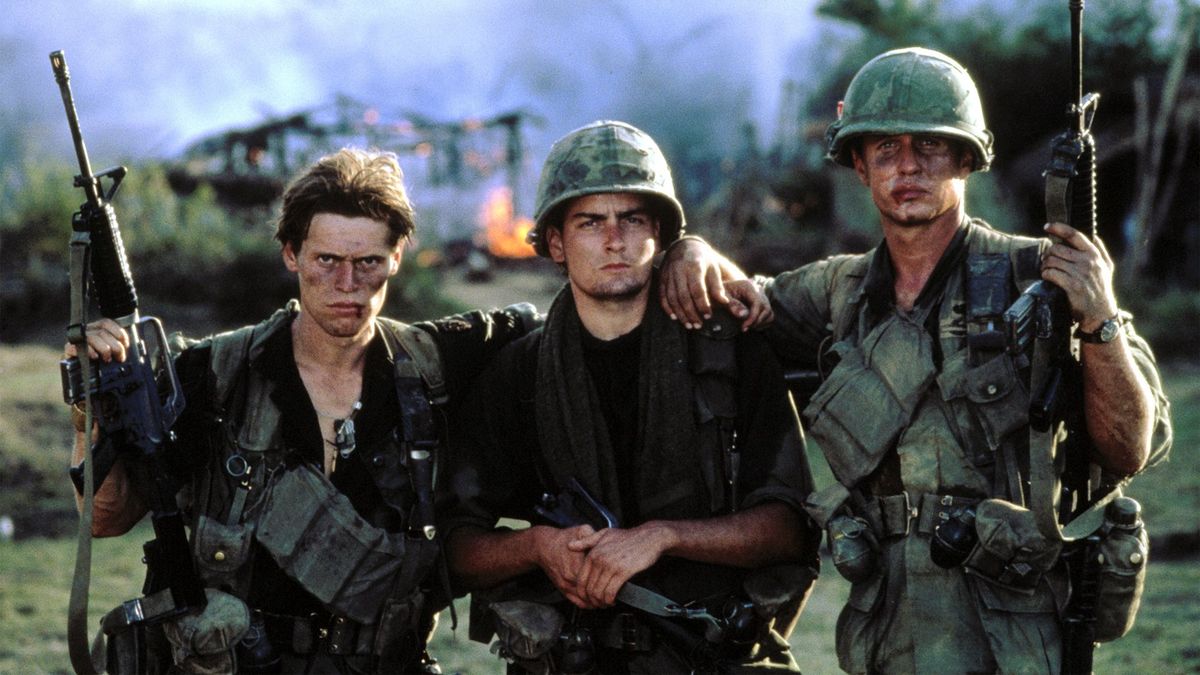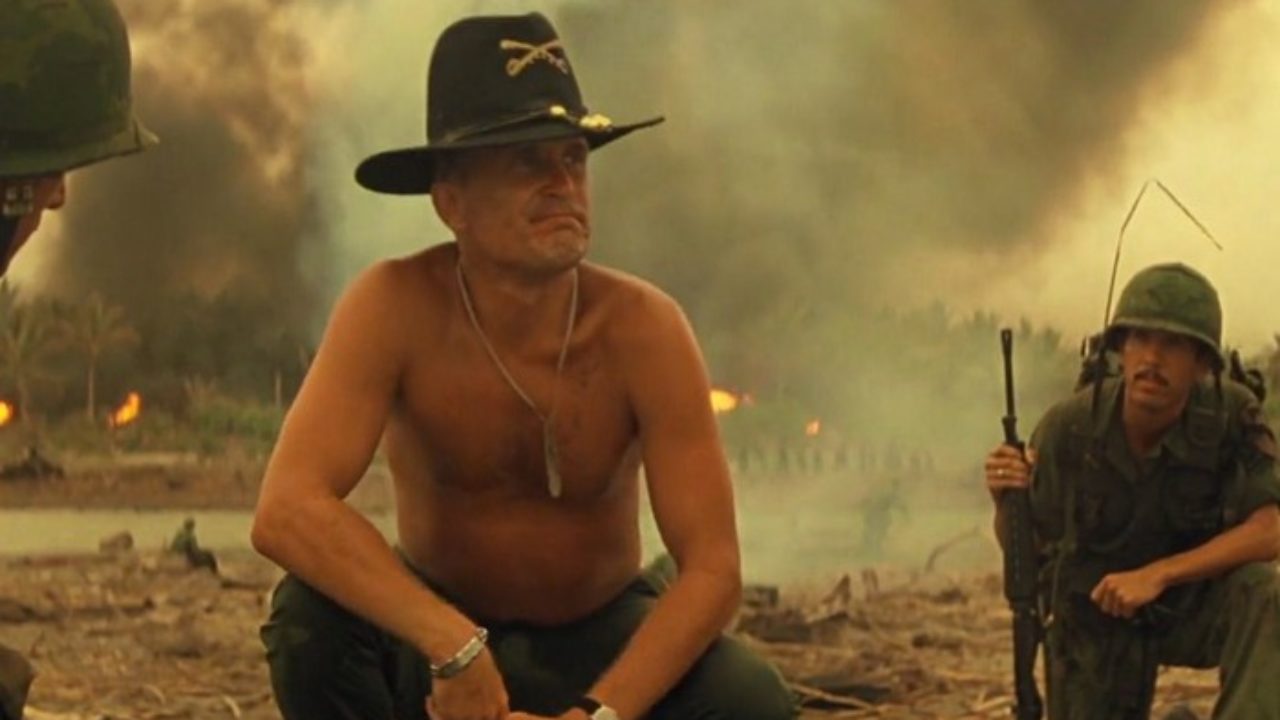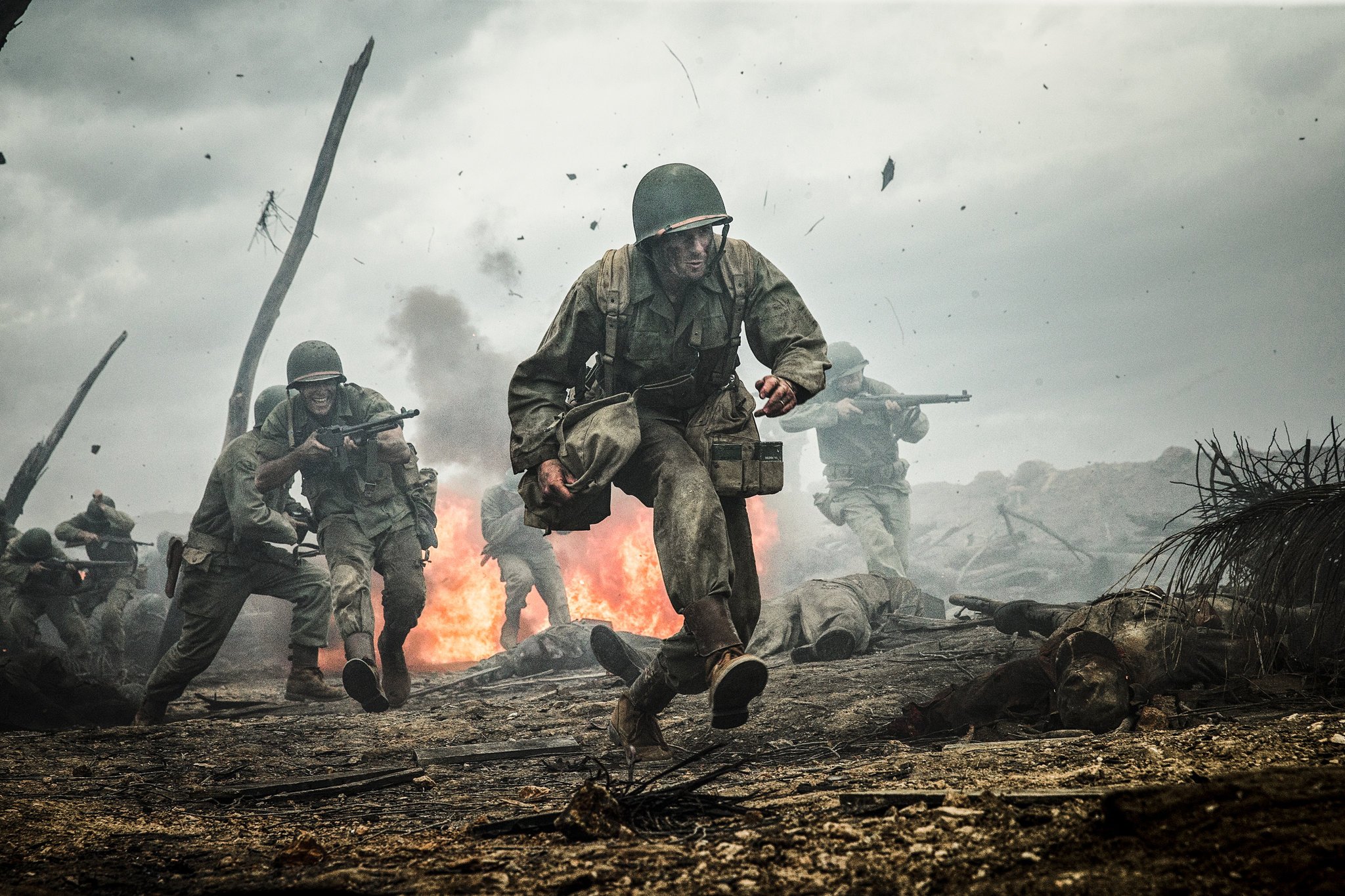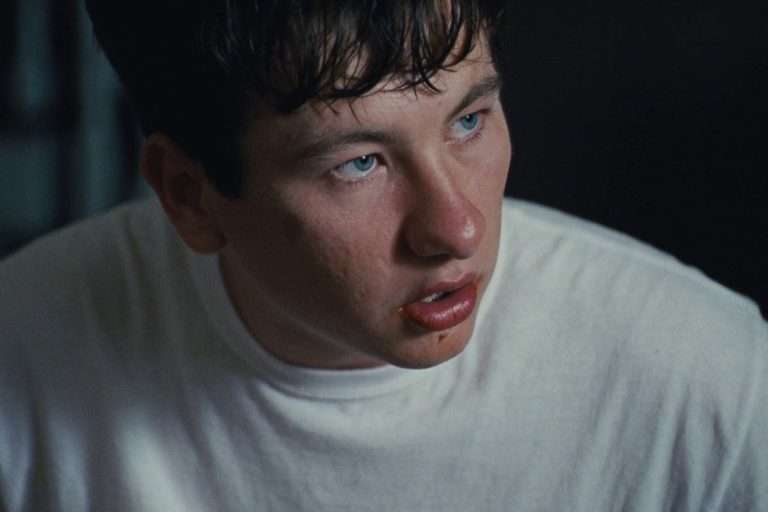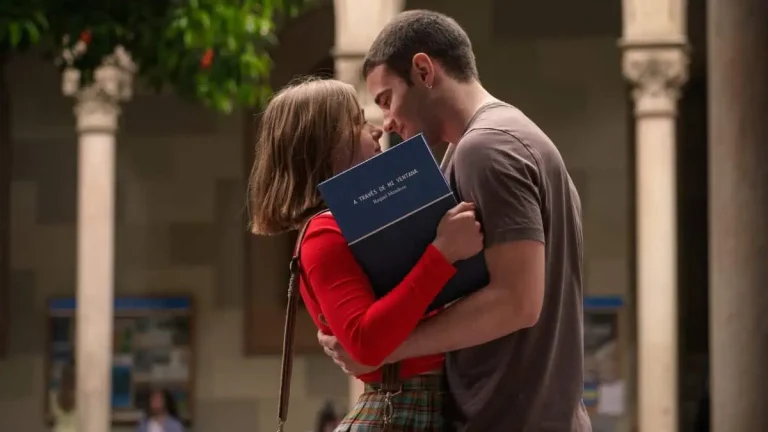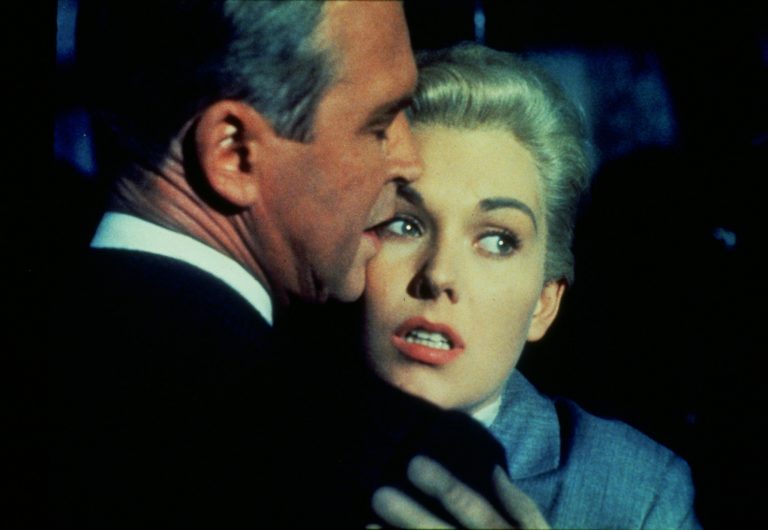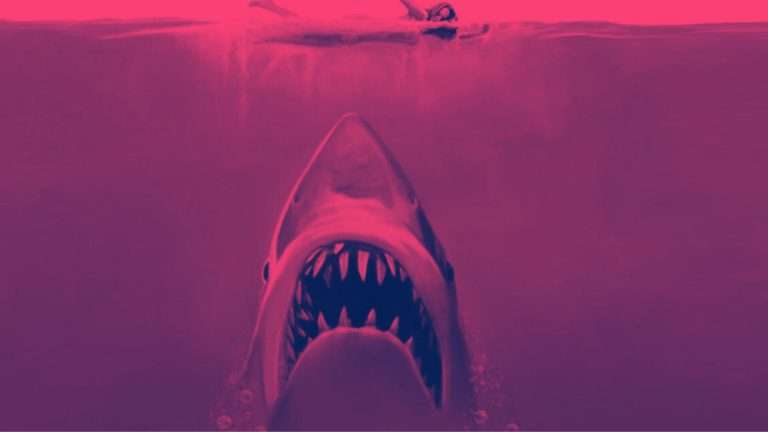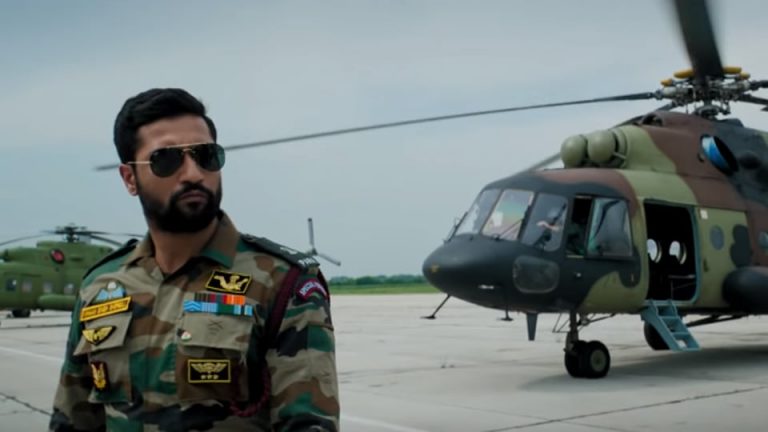“Gentlemen, you can’t fight in here. This is the war room.”
What is a war? Is it an extremely lengthy melodrama like the never ending long shots of “1917”? Or is it a Kafkaesque confusion that keeps on changing aspects like the regularly changing aspect ratios of “Dunkirk”? Or can it be just heartless monotonous suffering like that of “Greenery Will Bloom Again”? While Renoir feels it to be a great grand illusion of meaningless existence and goes on to compare the proceedings with a theatre, Kubrick portrays it as a family of paradoxes. And while talking about paradoxes about war, I personally can’t help but think about a statement from my homeland, one in which Mrinal Sen, in his film “Chorus” mocks, “War is not a game of cricket that everything will go by the rules” (observe the analogy between this and “This is nothing about law and order. This is a goddamn war.” from “The Thin Red Line”).
While Spielberg compares the war with a walk on the grave and goes on to sprinkle his celluloid with drops of blood to wash his frames with the roaring cacophony of it, Ford Coppola gets a step ahead to compare it with an apocalypse. What can, if not “the horror” of an apocalypse, force a sane human being to “learn to stop worrying and love the bomb”, and say things like “We are not here to do the decent things. We are here to follow the fucking orders”.
Related Read to War Films: Paths of Glory [1957]: An Anti-War Anthem
And this horror, which Bergman paints symbolically through playing a game of chess with death, is captured hilariously by the satirical Chaplin through a simple scene in which a hand grenade, ready to explode, slips into the user’s shirt and he struggles to free himself from the deadly trap. It is the same horror that Tarkovsky communicates to us through a scene in which one of the kids who are being trained in an army camp, throws a fake grenade and silently watches how others are terrified by it. Nolan portrays this horror through a frame in which a series of blasts miss our protagonist by an inch. Even Kurosawa, who glorified Samurai battles in his previous films, goes on to say, “It is the gods who weep. They see us killing each other over and over since time began. They can’t save us from ourselves”. While the poet in Malick decides upon using a disturbing symbol like a suffering hatchling, others like Peter Jackson, David Zeiger, George Butler, Sammy Jackson and many more takes another step towards reality by deciding upon the medium of a documentary.
And what about the horror of expecting a war? While Satyajit Ray and Mrinal Sen make extremely successful attempts in the vivid depiction of the fear of an approaching war over a society, Bergman resorts to creating a character who commits suicide to get rid of his bad dreams of a nuclear war. “Dr. Strangelove” creates a doomsday machine which can destroy the whole world once it is ignited. The protagonist of “A Hidden Life”, on the other hand, hopes that god would listen to his prayers and allow him to stay with his family. He runs to the church to ask the bishop whether his prayers will be answered only to be informed that the church bells are about to be melted to make bullets.
One of the recurring themes of almost all anti-war films seems to be the romantic tomfoolery of the ignorant common men that the war uses as jewelry. In “Hacksaw Ridge”, an ex-army officer who repents the loss of his dear friends and regularly visits the grave in their memory says, “Everybody jumps in and does things quick, without thinking! Like the damn idiot fools we were”. In “All Quiet on the Western Front”, a schoolmaster spits his patriotic poison out to send small school children to the war, and when one of them returns on a leave after losing all his friends and tells his juniors how wretched the war is, he is accused of being a coward by them. “Jojo Rabbit” is the journey of a young boy, hypnotized by Hitler’s ideologies, slowly recognizing the nature of the suppression as well as the suppressor only to finally understand that the war benefits none.
“Born on the Fourth of July” is introduced to us through a scene in which small boys play with toy guns and think that that’s how, they can become a man. When these kids become middle aged boys, the marines come to their school to introduce themselves. This introduction is nothing but the typical capitalist advertisement in the name of patriotism (this reminds me of colonel Dax in “Paths of Glory” repeating Samuel Jackson’s words, “patriotism is the last refuge of a scoundrel.”). Midway in this film, the protagonist realizes that they have been fooled into believing that Communism is the source of all evil and in name of stopping it, they have just killed innocent women and children.
Related Read to War Films: The Ascent [1977]: An Unheard Anti-War Masterpiece
Another repeating idea that I appreciate a lot is portraying the contrast between the peaceful approach of art and the violent approach of the war. The genius of Kubrick concludes an hour and a half’s tragedy with a melody that a German girl hums into English ears. In Ermanno Olmi’s film, a wretched captain commands a sergeant to sing the worst times out. In “Letters From Iwo Jima”, the army general makes sketches of his memorable moments in his free time. One navy officer in “Das Boot” loves clicking photographs to make memories and another takes pride in his personal collection of music. In “Saving Private Ryan”, soldiers listen to music before they march on. And “Hair” makes an extremity of it by making a musical out of a war film.
The obvious theme of the heartlessness of a war of course gets the greatest importance in every film. In “Paths of Glory”, three innocent soldiers are punished for just trying to stay alive, thus asking whether duty comes before self-preservation. They clearly become a victim of a senior’s ego. “Hiroshima Mon Amour” glides through the destruction that Hiroshima had to suffer for the war. In “Platoon”, American soldiers march into a village in Vietnam where they mercilessly destroy the crops and the domestic animals without any reason. The film proceeds to show one of the soldiers killing an innocent villager just because he didn’t like his face. A few minutes later, the general orders to shoot a village lady as she questioned their act of destroying the crops. He goes on to attempt killing her little daughter as she was crying for losing her mother. What’s more, a few soldiers even attempt to rape a young Vietnamese girl and the one who stops them is tagged a “homosexual” by the others.
In “Apocalypse Now”, a lieutenant throws cards on dead bodies of enemy soldiers to count their success. Teddy Daniels in “Shutter Island” silently watches an enemy soldier suffering for his pains and later he and his team mercilessly fire thousands of prisoners. “Dr. Strangelove” walks a step ahead to name an army general after a serial killer. In “Come and See”, innocent Russian villagers are forcefully locked inside a house which is then set on fire by the German soldiers. The helpless death cry of the locked villagers is overlapped with the sound of the clapping soldiers. These fifteen minutes of the film (and also the rest of it as a matter of fact) is so loyal to the medium of cinema, that I lack words to describe them properly. I would recommend this film to you all.
The masterpiece, “Johnny Got His Gun” further highlights this point by creating a character that has lost both his legs and arms, his vision, his hearing, his teeth and his tongue. He can only feel that he is alive and that people are using him for their experiments. He doesn’t understand whether he exists or not and can’t differentiate between dreams and reality. He has been reduced to absolute nothing but a bunch of memories and daydreams. At the end of the film, he succeeds in communicating his wish of getting killed using Morse code, but is denied the favor since that would disrupt the experiments. A priest is asked to tell him to put his faith in god, to which the priest replies, “I’ll pray for him for the rest of my days, but I will not risk testing his faith against your stupidity. He’s the product of your profession, not mine.” Maybe, the last word about this inhuman sadism is spoken by “Full Metal Jacket” – it’s the Jungian duality of man, the film claims.
Related Read to War Films: This Is Not A War Story [2021]: A Devastating Yet Knobbly Look At PTSD
Almost every film portrays how war breaks bonds between loved ones. While in “The Thin Red Line”, a soldier gets a letter from his beloved wife asking him for a divorce, in “Greenery Will Bloom Again”, a trooper recalls returning home to find his wife on bed with someone else. In “The Deer Hunt”, best friends, who enlisted together, return to their village only to realize that everything has changed. They no longer feel the same sense of attachment with the villagers which they previously used to. “American Sniper” particularly highlights how the war distances a sniper from his family. The final flashback of “Ivan’s Childhood” is of the young boy (who lost everything including his own self in the war) running across a beach after a girl in happier times and it concludes with a stunning visual of a dead tree on the beach.
In the 1925 silent masterpiece, “The Big Parade”, an English soldier falls in love with a French girl and when the war breaks out, circumstances decide upon separating them. We have a scene where the soldier, before leaving the town, madly searches for his lover and vice versa. Each one of them is unable to reach out for the other in the crowd. And when they finally meet, they hardly have time to talk. The girl starts running after the car that takes her lover away. It is the same run that “A Hidden Life” paints when the protagonist is forced to leave his wife and “Come and See” portrays when the boy leaves his mother. All of them run as far as they can, but they all are finally overtaken by the pace of the system.
Another idea that I really adore is the illustration of how the system of a war crushes the individuality of man- this is often done through small yet significant bits of information like a general saying that they are ready to waste (yeah, that’s the word they use) half of the battalion for just a piece of land that they need. Ritwik Ghatak’s idea of making a film about Vietnam, as he writes, goes, “A young boy struck by a bullet. We don’t know who he is; he may be a student or a farmer.”. “Personal ambition must be thrown aside”, yells the schoolmaster in “All Quiet on the Western Front”. After the radio announces the death of 115 men in a war, Anna Karina’s monologue in Godard’s “Pierrot Le Fou” says “It’s so anonymous. They say “115 guerrillas”, and it means nothing to us. But each one is a man, and we don’t even know who he is, if he loves a woman, if he has kids, if he prefers movies or plays. We know nothing except that they are killed.”
Other subtle similarities in ideas and cinematography often surprise me. In “Ivan’s Childhood”, “Greenery Will Bloom Again”, “The Big Parade” and “Come and See”, whizzing rockets look like falling stars. Almost all films use disturbing visuals to show how wretched the war is- one of the repeatedly used images being a hand stuck on a barbed wire. But the one that was of greatest interest to me is the delineation of a sense of miscommunication. Almost all films have a scene in which enemy soldiers fail to communicate and thus end up killing each other. “Fear and Desire” has a fabulously disturbing scene in which a soldier tries to communicate with a foreign girl. However, “The Grand Illusion” paints it in a unique way. A French soldier falls in love with a German lady. He can’t understand German in general, but easily gets when the woman speaks to him with love or asks whether he is hungry- the words of love and hunger are universal, they don’t obey our linguistic boundary. And “Johnny Got His Gun” is clearly a tale of a struggle for communication. Maybe, that’s what a war is a big fat bug of miscommunication in the history of mankind.
Related Read: The Commissar [1967] : A Startlingly Envisioned Drama About The Cruelties Of War
P.S. Two things must be made clear. First, this article is not one on anti-war cinema. Some of the films mentioned here are clearly not anti-war films, quite a few of the others are often debated whether they are really anti-war or not, and going by Truffaut’s words, “There is no such thing as anti-war film”. According to me, this article is a comparative study of the anti-war message that different films give in their own way. Second, of course, this article does not enlist all anti-war films that released till now- it enlists only the small fraction that I have seen. So, feel free to share your own ideas and recommendations as well.

